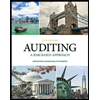
Equity investments: The financial instruments which claim ownership in the issuing company and pay a dividend revenue to the investor company, are referred to as equity securities. The investments in equity securities are referred to as equity investments.
Debt investments: The financial instruments which are bought by investors, or corporations, or mutual funds, are referred to as debt securities. The investments in debt securities are referred to as debt investments.
International Financial Reporting Standards (IFRS): IFRS are a set of international accounting standards which are framed, approved, and published by International Accounting Standards Board (IASB) for the preparation and disclosure of international financial reports.
To mention: The categories for debt investments, and equity investments, in which the investor lacks significant influence, according to IFRS Number: 9
Trending nowThis is a popular solution!

Chapter 12 Solutions
Intermediate Accounting, 10 Ed
- in the “Problems – Series A” section 8-19A of Ch. 8, “Performance Evaluation” of Fundamentals of Managerial Accounting Concepts. Scenario: The Redmond Management Association held its annual public relations luncheon in April Year 2. Based on the previous year’s results, the organization allocated $25,290 of its operating budget to cover the cost of the luncheon. To ensure that costs would be appropriately controlled, you, the treasurer, prepared the following budget for the Year 2 luncheon. Usin Excel—showing all work and formulas—to complete the following: I need help Preparing a flexible budget. Computing the sales volume variance and the variable cost volume variances based on a comparison between the master budget and the flexible budget. And Computing flexible budget variances by comparing the flexible budget with the actual results.arrow_forwardI am searching for the accurate solution to this financial accounting problem with the right approach.arrow_forwardCher Enterprises reported net income of $2,100,000. The average total liabilities were $6,800,000 and the average total stockholders' equity was $7,400,000. Interest expense was $250,000 and the tax rate was 30%. What is the return on assets ratio?arrow_forward
 Intermediate Accounting: Reporting And AnalysisAccountingISBN:9781337788281Author:James M. Wahlen, Jefferson P. Jones, Donald PagachPublisher:Cengage Learning
Intermediate Accounting: Reporting And AnalysisAccountingISBN:9781337788281Author:James M. Wahlen, Jefferson P. Jones, Donald PagachPublisher:Cengage Learning Auditing: A Risk Based-Approach (MindTap Course L...AccountingISBN:9781337619455Author:Karla M Johnstone, Audrey A. Gramling, Larry E. RittenbergPublisher:Cengage Learning
Auditing: A Risk Based-Approach (MindTap Course L...AccountingISBN:9781337619455Author:Karla M Johnstone, Audrey A. Gramling, Larry E. RittenbergPublisher:Cengage Learning



